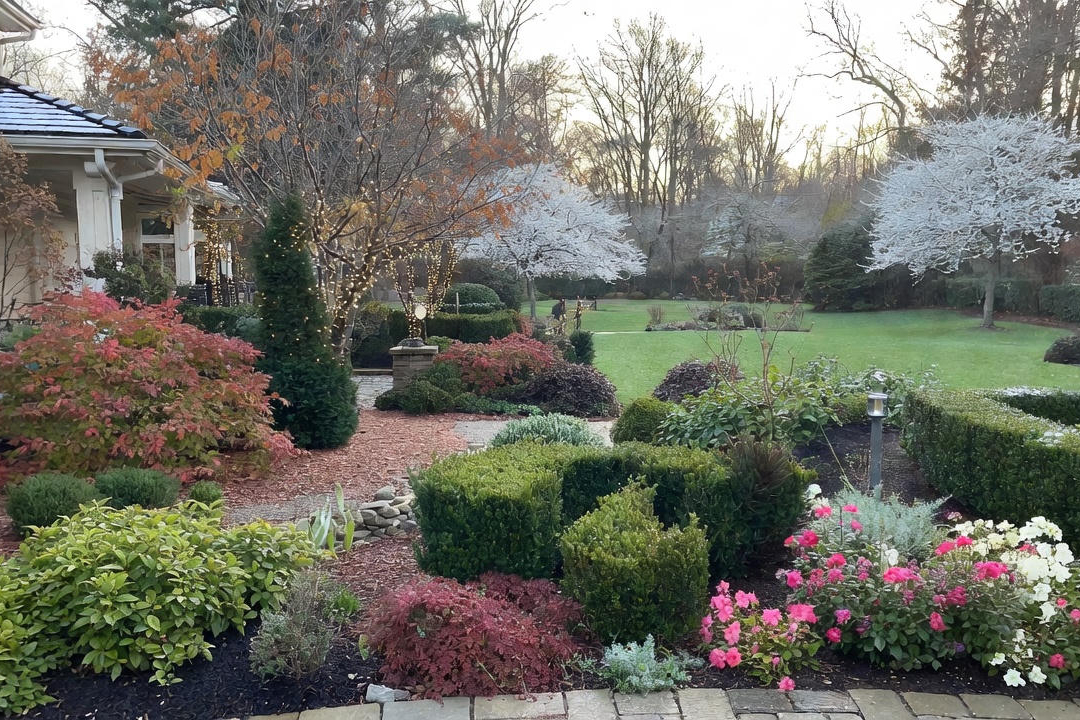
Lavender (Lavendula) is a semi-woody, semi-evergreen perennial herb beloved for its versatility. Professionals find lavender’s billowy form perfect for flanking walkways and as low hedges for borders. Planted en masse, lavender paints a meadowy picture of a landscape. Homeowners also find them an elegant and easy-to-grow solution for outdoor pottery.

Plant Profile
There are several different species of lavender. Among each species are numerous varieties to choose from. English lavender (L. angustifolia) is one of the most popular species, as they not only perform well in the garden, but they have the strongest fragrance. Other lavender species are French lavender (L. dentata) and Spanish lavender (L. stoechas) and vary slightly in looks compared to the English varieties. (Fair warning: Unfortunately, both the French and Spanish botanical names are used interchangeably.)
Zones: Most are hardy from zones 5 to 9. The exception is Spanish lavender which will only survive the winter down to zone 7.
Sun/Shade: Full sun/perhaps afternoon shade
Height: 20” – 24” tall
Width: 20” – 24” wide
Bloom Time: Early spring through the summer depending on the species.
Bloom Color: violet, blue, light pink, rose, white, and yellow.
Wildlife: All lavenders attract butterflies and bees.

Cultivation
Starting lavender from seed is a difficult task. It’s much easier to purchase young starts from a nursery or propagate them from cuttings taken from a mature plant. Lavender prefers full sun with some afternoon shade in the hottest areas. It like average, well-draining soil, slightly alkaline soil. About the only soil it won’t tolerate is heavy clay. A sunny slope is the ideal growing place for lavender plants.
Don’t plant lavender plants too deep. The planting hole should be deep enough to allow the top of the root ball to be just flush with the ground. Regular watering is important until the plants have become established. Once established, these hardy shrubs can handle drought conditions and will only need watering after the topsoil is dry. Little fragrant blooms show up on tall spikes from early spring to late summer depending on the variety. Trim the plants back by one third in the earliest part of spring and then again after they bloom in the summer to encourage new growth.
Varieties
- ‘Munstead’ and ‘Hidcote’ (L. angustifolia) are among the most popular landscape varieties for deep fragrance, silver-gray leaves, and purple flowers. There’s also a ‘Hidcote’ pink variety.
- ‘Madrid Purple’ (L. stoechas) has rabbit-ear-like bracts atop its flowering spikes. This is a long bloomer from spring through summer.
- ‘Buena Vista’ (L. angustifolia) – Great hedge variety and blooms from spring through the summer.
- ‘Jean Davis’ (L. angustifolia) blooms in spring and early summer with pale pink flowers.
- ‘Grosso’ (Lavandula × intermedia ‘Grosso’) has beautifully variegated leaves It’s a hybrid cross between English lavender (L. angustifolia) and Portuguese lavender (L. latifolia). These crosses are referred to as lavandin.
- ‘Province’ (L. x intermedia ‘Province’) – Excellent for areas with dry summers and great for creating hedges.
- ‘Meerlo’ (L. allardii ‘Meerlo’) are reputed to be some of the most heat-tolerant and drought-resistant lavenders. They have variegated leaves, light blue summer flowers, and are quite fragrant.
Special Features
Lavender is as versatile as they come. It’s not only deer and rabbit-resistant, it’s drought tolerant. Outside of the gardens it provides endless uses for crafting, beauty aids, and bouquets. Plus, the flowers are wonderful in foods!




ds.jpg)
.jpg)
